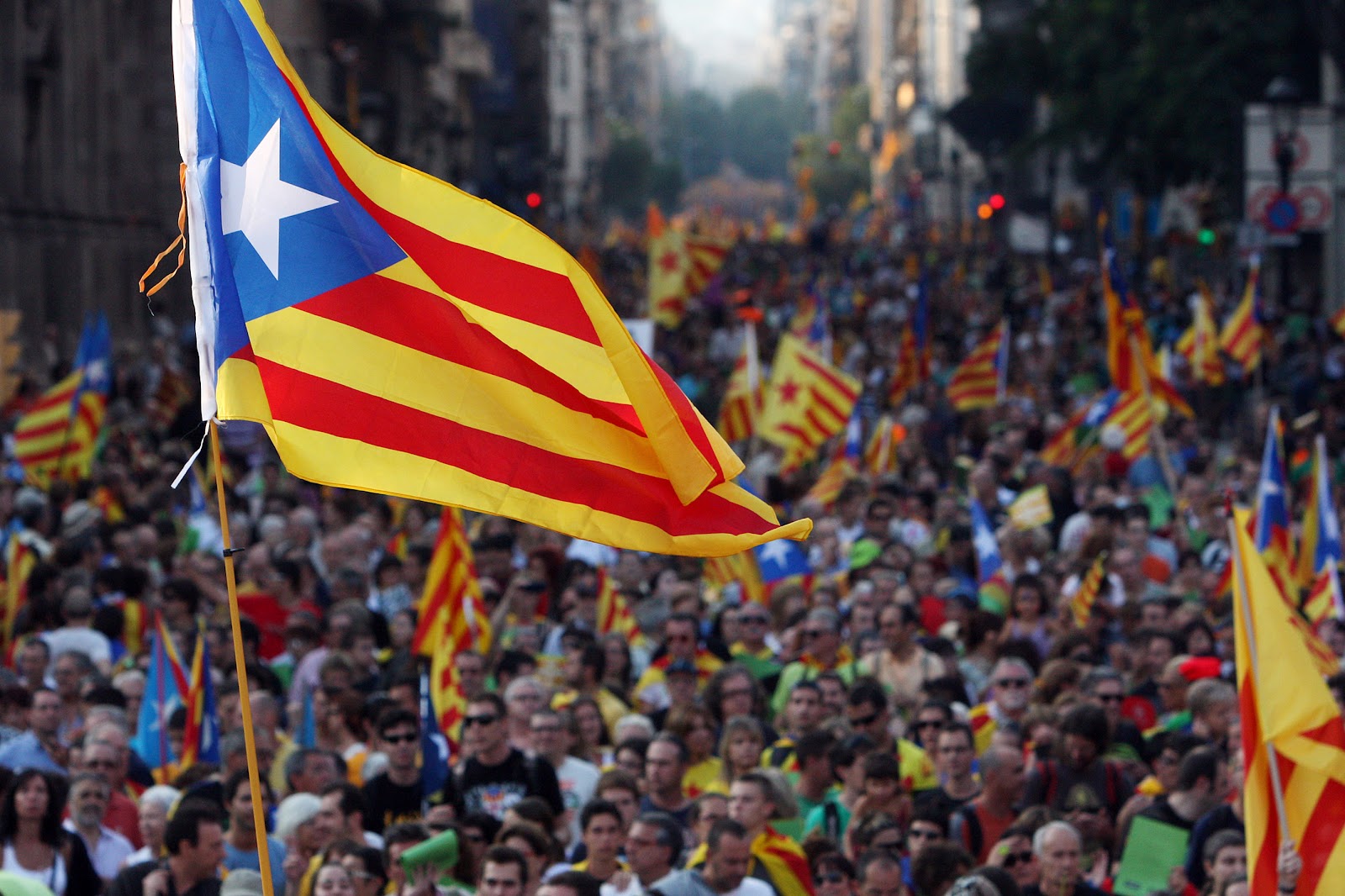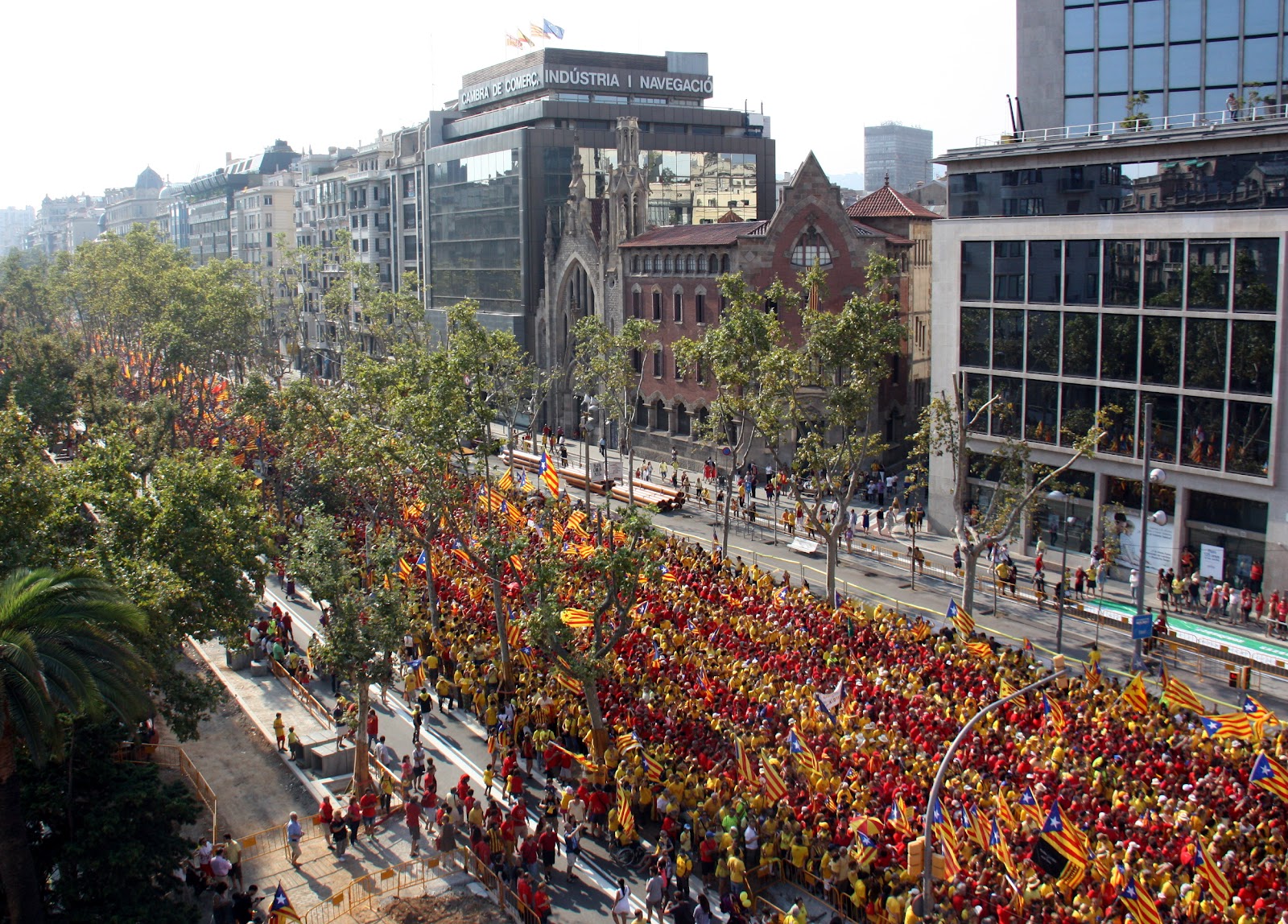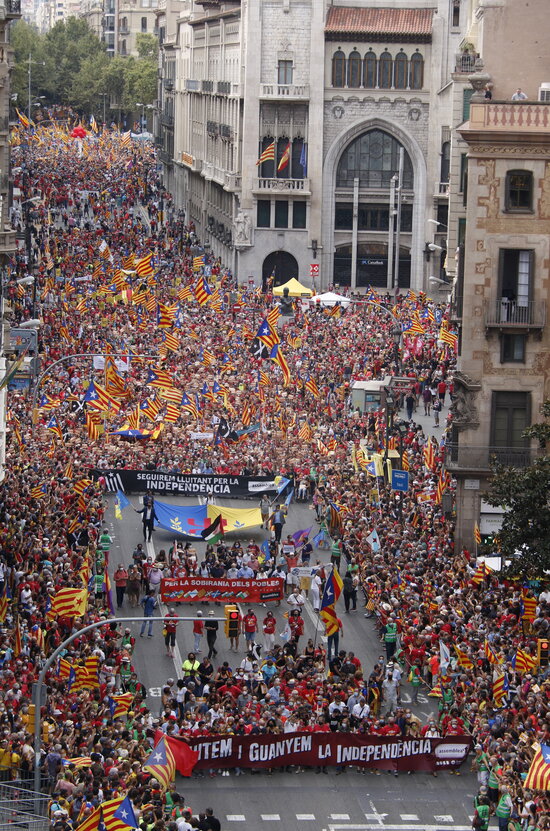Catalonia’s National Day pro-independence rallies: a new chapter
Tensions in independence camp has led to a loss of momentum, but a new political landscape provides opportunity

September 11, 2012, marked the start of a new chapter in Catalonia’s pro-independence history. That year, with then-president Artur Mas, around 1.5 million people took to the streets to claim that the territory became "Europe’s newest state." Since then, ten years have passed, with many major political, but also social, changes.
Each year, a massive pro-independence demonstration has been held coinciding with Catalonia’s National Day, or 'La Diada'. These rallies captured international attention and shaped domestic politics.
This year, the protest organized by the Catalan National Assembly (ANC) comes with a delicate political landscape across Spain.
Following poor results in May's local elections, Spanish PM Pedro Sánchez brought the general election forward to July, which returned a hung parliament with no clear way forward.
Neither the right-wing bloc of the People's Party and Vox nor the left-wing bloc of the Socialists and Sumar won enough seats in Congress to form a government. But, with the seven seats of each Esquerra and Junts, either side would be able to form a majority, although the chances of either supporting the right bloc are effectively null.
The moment has presented pro-independence parties with options over how to leverage their position, with both sides agreeing to present a unified front in negotiations to potentially name Pedro Sánchez Prime Minister again. All of a sudden, the exiled former Catalan president, Carles Puigdemont, became a very important figure in Spanish politics once again.
This National Day rally comes as talks are still ongoing. Puigdemont has revealed the prerequisite before talks to name Sánchez PM can go forward: an amnesty law for those undergoing judicial cases related to seeking independence for Catalonia. Then, negotiations would also depend on self-determination, which Puigdemont said was necessary to "solve the fundamental problem."
Alberto Núñez Feijóo, the leader of the conservative People's Party, is going to attempt in Congress to be named the new PM at the end of September, but without the requisite support from other parties, it's highly unlikely he'll assume power in Madrid. Focus will then shift to whether or not Pedro Sánchez and the Socialists will be able to garner enough support from the Congress to bring in another left-wing legislature.
This year's demonstration will be made up of four columns representing "the fundamental values of the future Catalan republic, freedom, language, country, and sovereignty."
These will depart from Ciutat de la Justícia (freedom), Escola Proa (language), Plaça dels Països Catalans (country), and Plaça del Doctor Letamendi (sovereignty) at 5:14 pm, although people are advised to arrive earlier.
The columns will make their way to Plaça Espanya square, a location the organization has re-named Plaça 1 d'Octubre in reference to the date of Catalonia's independence referendum deemed illegal by Spain.
Here's a rundown of how the last 11 years of National Day pro-independence demonstrations have developed.
2012: And so it begins
The first September 11 demonstration was called by the pro-independence Catalan National Assembly in 2012. Their motto and objective was simple: “Catalonia, new European state:”
There is some debate over how many people actually turned up in what would become a trend at future demonstrations. Organizers claimed they managed to assemble 2 million people in Barcelona, while the Spanish government delegation in Catalonia rebuked this, stating that there were only 600,000. Meanwhile, the Catalan government and local police found a middle ground with an estimate of 1.5 million people, perhaps a more reliable figure.

The Catalan president at the time and leader of the now-defunct CiU party, Artur Mas, traveled to Madrid after the protests to demand a better financial deal for Catalonia from his Spanish counterpart, Mariano Rajoy. Rajoy rejected the request and Mas started advocating for Catalonia’s right to self-determination. This marked the beginning of nine years (and who knows how much longer) of talk of independence in Catalonia.
2013: Citizens lock arms in 400km chain
The Catalan National Assembly and Òmnium Cultural organized a rally inspired by the events of 1989 in which people joined hands across Estonia, Latvia, and Lithuania to protest against the USSR.
Catalans stood similarly together, arm in arm, crossing Catalonia from north to south, with the Camp Nou even opening its doors so that the chain could pass through it. An estimated 1.6 million participated.
2014: Streets overflowing with a staggering 1.8 million people
Two months before the non-binding November 9 vote on independence, protesters made it pretty clear how they would be voting.
Protesters wore yellow and red t-shirts and formed a giant V with the colors of the Catalan flag through two of Barcelona’s major streets, Gran Via and Diagonal.
An estimated 1.8 million people participated that year in a figure that has not been surpassed since. The culmination of the protests was at 5:14 pm when out of the 1.8 million people present, one girl cast a vote in a ballot box placed at the point of the V. The time chosen represented the year 1714, when Catalonia was defeated by Spain in the Succession War and lost political independence.

2015: Values of the future Catalan Republic
In 2015, pro-independence supporters laid out plans for the future of Catalonia. Protesters, this year estimated at 1.4 million, carried pointed banners.
People were divided into ten differently colored sections, each representing a different value of the future Catalan republic including social justice, solidarity, culture, democracy, and sustainability.
2016: Protesters extend sphere of influence
Protesters this year spread across five different cities across Catalonia: Berga, Barcelona, Lleida, Salt, and Tarragona. Once again the divide represented different dimensions of Catalonia as an independent state. However, this year the number of protesters more than halved to 800,000.
2017: Run-up to the referendum
Less than three weeks before the October 1 referendum on independence, the September 11, 2017 protests were known as the ‘Diada del Sí’ (‘National Day of Yes’), given what protesters hoped the outcome of the referendum would be.
Protesters were brought on buses from all around the country wearing yellow shirts for independence and held a minute of silence in memory of the victims of the Barcelona and Cambrils terrorist attacks in August of that same year.
This year protesters created a giant ‘plus’ sign in a demonstration at the intersection of major roads. Large pro-independence banners were also passed along over the crowds. Crowds for this year were estimated to be at around 1 million.
2018: A fight to free political leaders
Protesters gathered to demand the release of jailed political leaders who were charged for calling a referendum and trying to split from Spain in 2017.
The number of protesters was comparable to the previous year, estimated at around 1 million.

In 2018, protesters donned t-shirts bearing the slogan: ‘We’re making the Catalan republic.’
Much like in 2014, at 5.14 pm an act of symbolism was carried out, once again representing the fall of Catalonia in 1714. Total silence fell, followed by a wave of sound from one end of Diagonal to the other where a wall was toppled, representing the direct rule imposed by Madrid following the independence referendum.
2019: Lowest turnout ahead of long-awaited verdict
With 600,000 attendees, according to Barcelona’s local police, 2019’s rally saw the lowest turnout for a National Day demonstration since the independence movement went mainstream in 2012. Still, protesters managed to flood Barcelona’s Plaça Espanya and Gran Via avenue.
A month later, the sentencing of 9 independence leaders convicted of sedition for organizing the 2017 independence push unleashed a wave of protests that looked nothing like the National Day rallies, with hundreds injured following a week of altercations in Barcelona and other cities.
2020: Protesting despite Covid-19
The Catalan National Assembly opted for a highly de-centralized Diada with over 130 events all across Catalonia, as well as abroad, in an effort to prevent the spread of Covid-19.
All events combined gathered around 59,500 people, ranging from the 1,700 who attended an event in Badalona to the 12 people who gathered in Taüll, a small town in the Pyrenees.
Under the motto "The duty to build a better future, the right to be independent," these de-centralized protests were complemented by online activities striving to create "a great virtual network" as well as Covid-19 fundraisers.
2021: Remembering the battle of Urquinaona
Starting in the center of Barcelona, at the square of Plaça Urquinaona, thousands of demonstrators marched up to the Catalan parliament building in Ciutadella Park.
The start remembered every one of the violent clashes between police and rioters following the sentencing of pro-independence leaders in 2019. That year, ANC decided to unite all forces in a joint rally in the Catalan capital without social distancing.

2022: Divisions among independence camp become clear
The relationship between Catalonia's two main pro-independence parties, Esquerra Republicana and Junts per Catalunya, has oftentimes been fraught, but the divisions among the then-government coalition partners became more and more clear during the 2022 National Day Rally when Esquerra opted against taking part in the Catalan National Assembly's demonstration. It was the first time since 2015 that a Catalan president missed a National Day rally.
Weeks later, tensions would come to the fore during the general policy debate, eventually leading to Junts pulling out of the executive, leaving Esquerra to govern alone.
Despite the fractures among the pro-independence camp, police estimated that 150,000 people attended the main protest, while organizers lifted that figure to 700,000 – both higher than the previous year's counts.